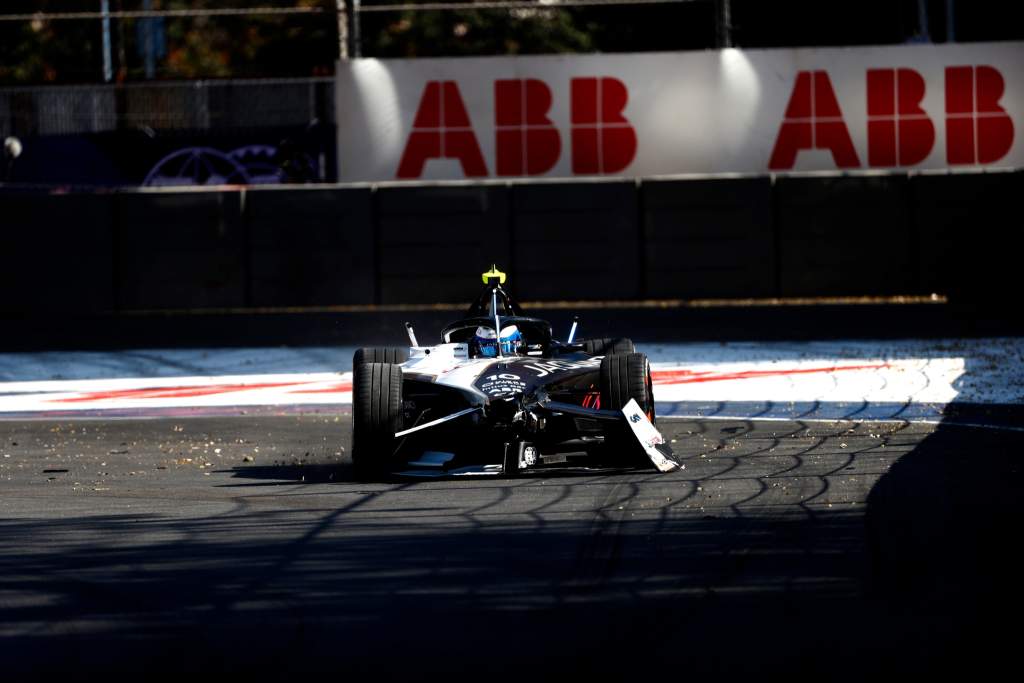The Hyderabad E-Prix was the first race of the current Formula E season not to result in a Porsche 1-2, yet the brand came out much better than it would’ve expected to when it had to park its cars in practice after Pascal Wehrlein’s big crash and then had none of its quartet make the duels.
In the race, it was helped by an intra-team catastrophe within its main works rival, and a victory for someone who doesn’t yet pose an immediate title threat.
But that someone sits high atop the list of winners in our regular feature, after a first race in India that – for all the preparatory angst – set new high marks in terms of drama and action in Gen3.
Winners
Jean-Eric Vergne
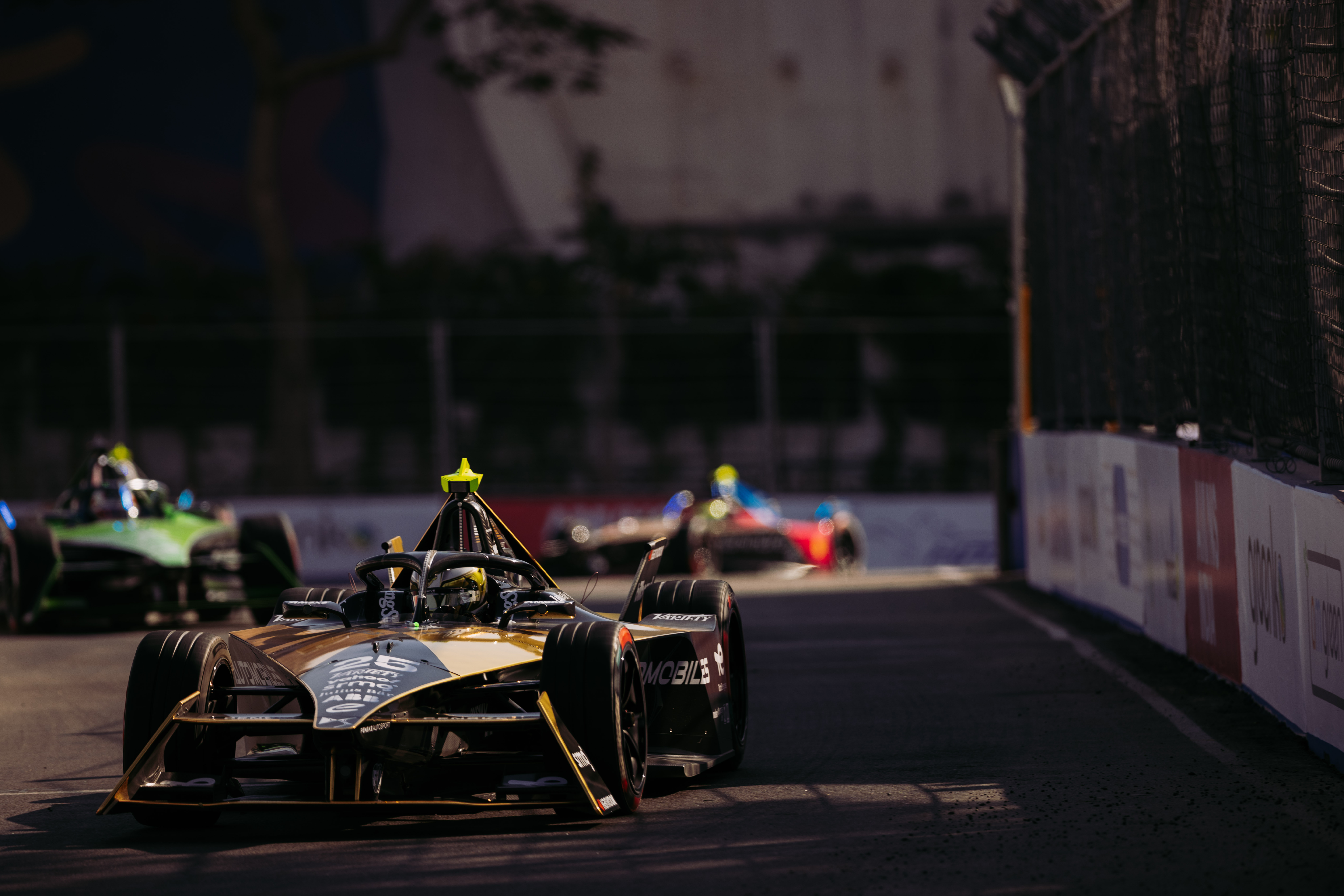
One race a disinterested also-ran who caused his team owner to switch his own radio off (in round three at Diriyah), the next a master in charge of an E-Prix despite intense pressure in the closing stages.
That’s Jean-Eric Vergne sometimes. But to be fair to him, Diriyah was extremely challenging for several reasons, notably the bumpy surface which appears to be the DS E-TENSE FE23’s chink in the armour.
Vergne converted a few slices of luck. The safety car aided him just when he needed it and the difficulty in overtaking at a track that essentially had but one real racing line was to his advantage too.
Yet none of these should take anything away from a finely judged drive and excellent work by a DS Penske team that rightly toasted its first victory as an alliance.
But there was some caution from Vergne, who said: “I think we’ve got to be careful; we’re certainly not there yet. We’ve seen in the race that, OK we won but we weren’t that quick.
“I think it’s good for the morale of everyone in the team because, after the first three races, it’s quite hard to come back with so little points and so much work and no result.
“So, it’s good for everybody but we still have quite a lot of things to improve, to understand, to get better.”
Nick Cassidy
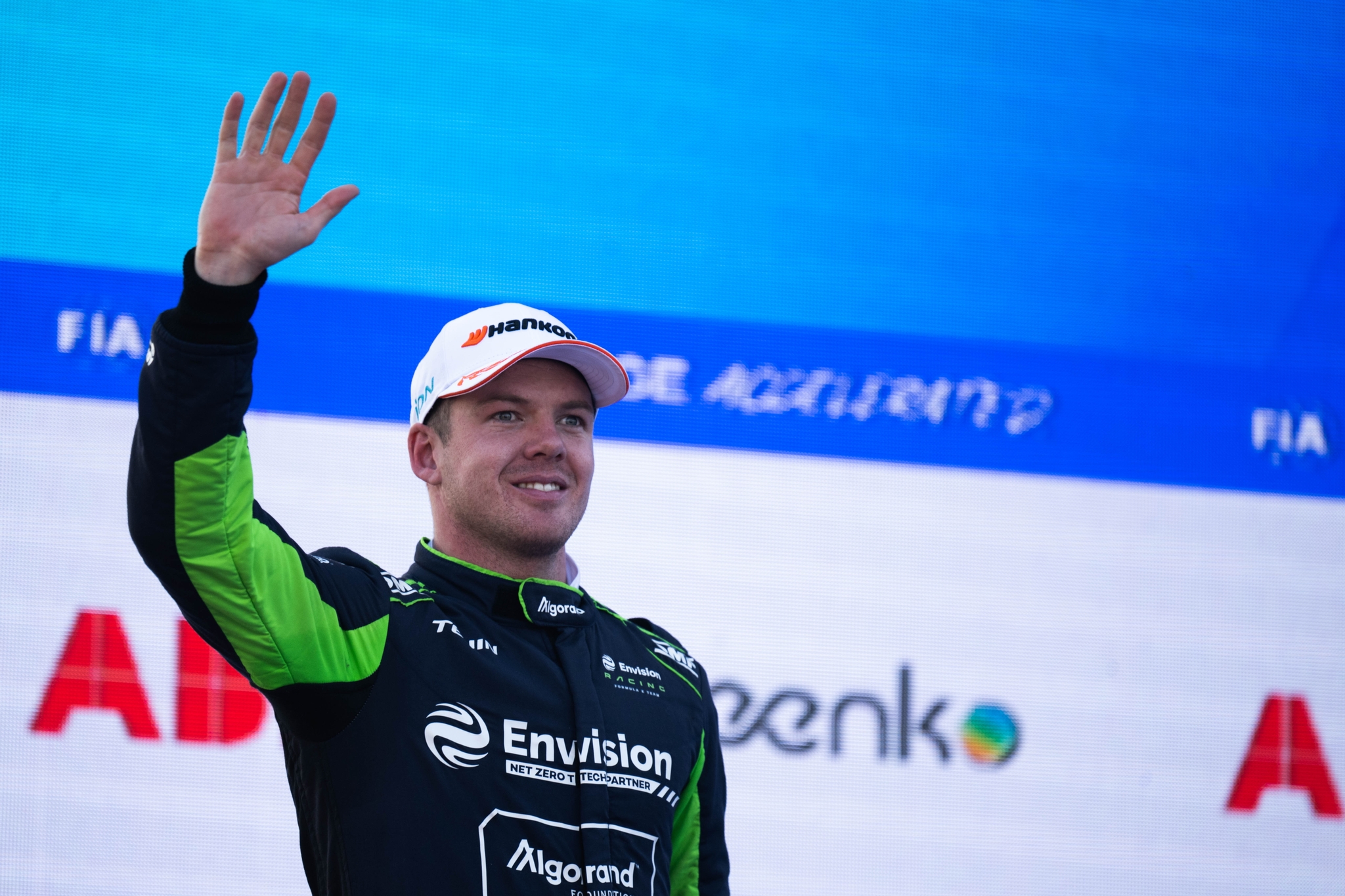
Nick Cassidy had a reasonably conservative start to the 2023 season but that all changed in Hyderabad with an epic performance.
Unfortunate to miss out on making it into the duels by 0.001s, the Envision Jaguar driver made a bold start, serving his intent by diving inside Sam Bird into Turn 3 in the opening laps.
When the Bird-infused chaos played out on lap 12, Cassidy was there to pounce and he was soon running second. But more importantly he was energy-rich and able to tail Vergne in the final laps.
The Kiwi was as sturdy as he was quick, surviving contact from Edoardo Mortara and Jake Dennis to position himself for a crack at a potential second E-Prix victory.
It wasn’t to be and both the safety car and also an erroneous message from the FIA stating wrongly that Vergne had been black-flagged (it was actually a black and white for traffic limits) were a pain for Cassidy.
The safety car because it allowed Vergne to better manage his energy, while the incorrect message meant Cassidy’s engineer Robert Sattler relayed the false info for his charge to sit tight for half a lap when he could have been applying more pressure.
“When the safety car happened, I knew the targets would go up and it would help them [Vergne and DS Penske],” Cassidy told The Race.
“I saw straight away on lap one that, yeah, it was a bit easier but I thought I could still push him to spend more and then when he got the black flag I looked at one lap and it allowed him to recover a lot into Turn 3 and I think from that point on he was quite safe to be honest on energy.”
Porsche
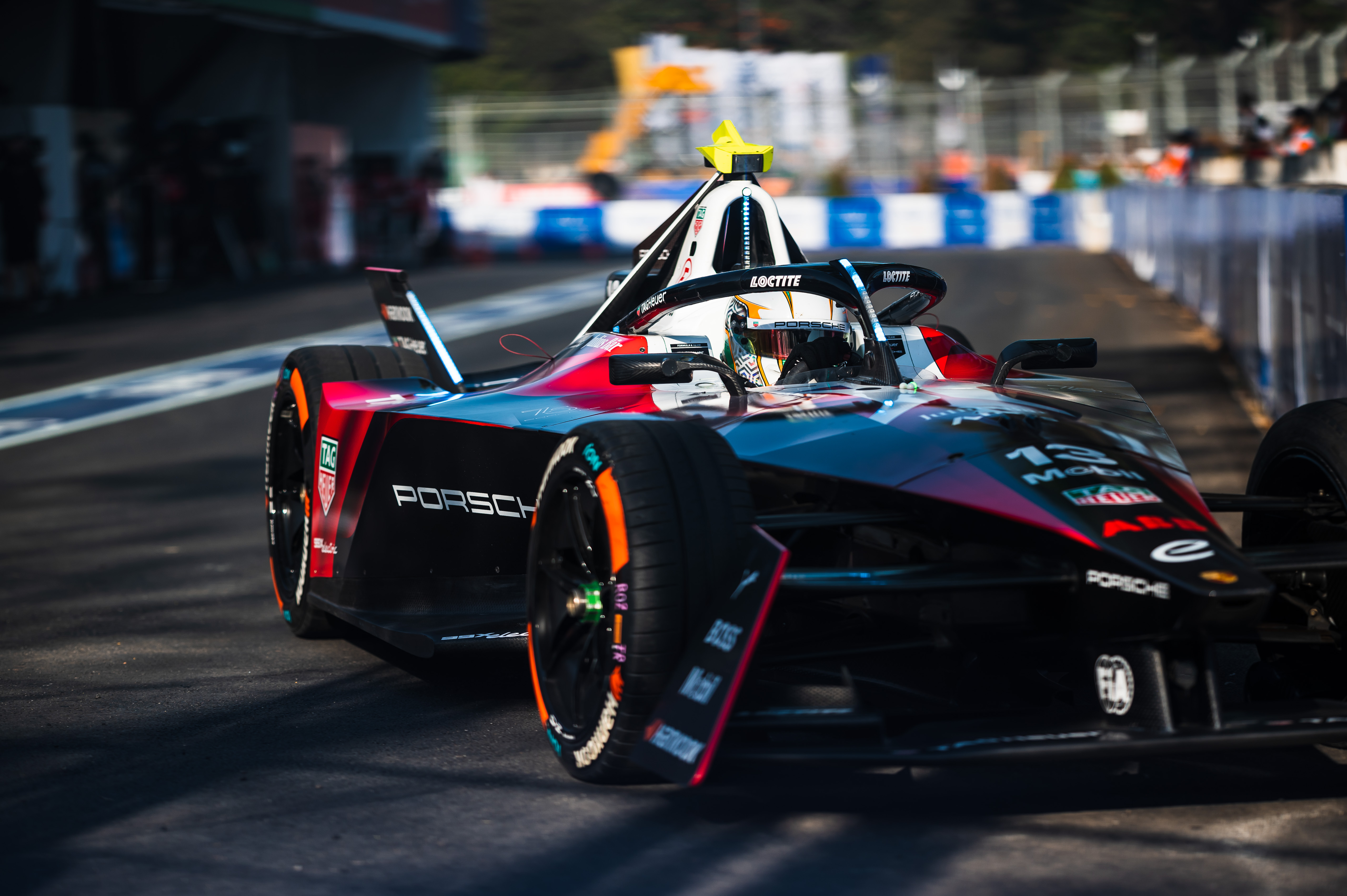
With one car in bits and the other parked in the garage at the end of FP1, gaining its biggest combined points haul of the season was a major achievement by Porsche.
Extending leads in both the drivers’ and teams’ championships was a very good day at the office and much more than just a damage limitation exercise.
Antonio Felix da Costa drove a considered and slightly low-key race but the result – a first podium for Porsche – was exactly what he needed.
“It has been a tricky start for me but I have a great team behind me that keeps on supporting me and giving me the tools to keep improving every weekend,” said da Costa after the race.
“I feel that we’re doing big steps every time and the short-term goal for me now is to be quicker in one lap, one lap pace because clearly we do have a great race car, you can see the Porsches have a tendency, they do go forwards in the races so it’s a matter of starting to put it all together.”
Pascal Wehrlein, now 18 points to the good in the standings, executed a similarly stealthy rise from a lowly 12th on the grid (and 15th in the opening stages) to fourth, grabbing some fortune but equally proving quick and consistent, albeit not having as much of an advantage on efficiency as he had enjoyed in Saudi Arabia.
For a sleep-deprived Wehrlein, who was in some pain from a tweaked back after his practice shunt, it was, in the circumstances, almost as good as his previous two victories in Diriyah.
Sergio Sette Camara
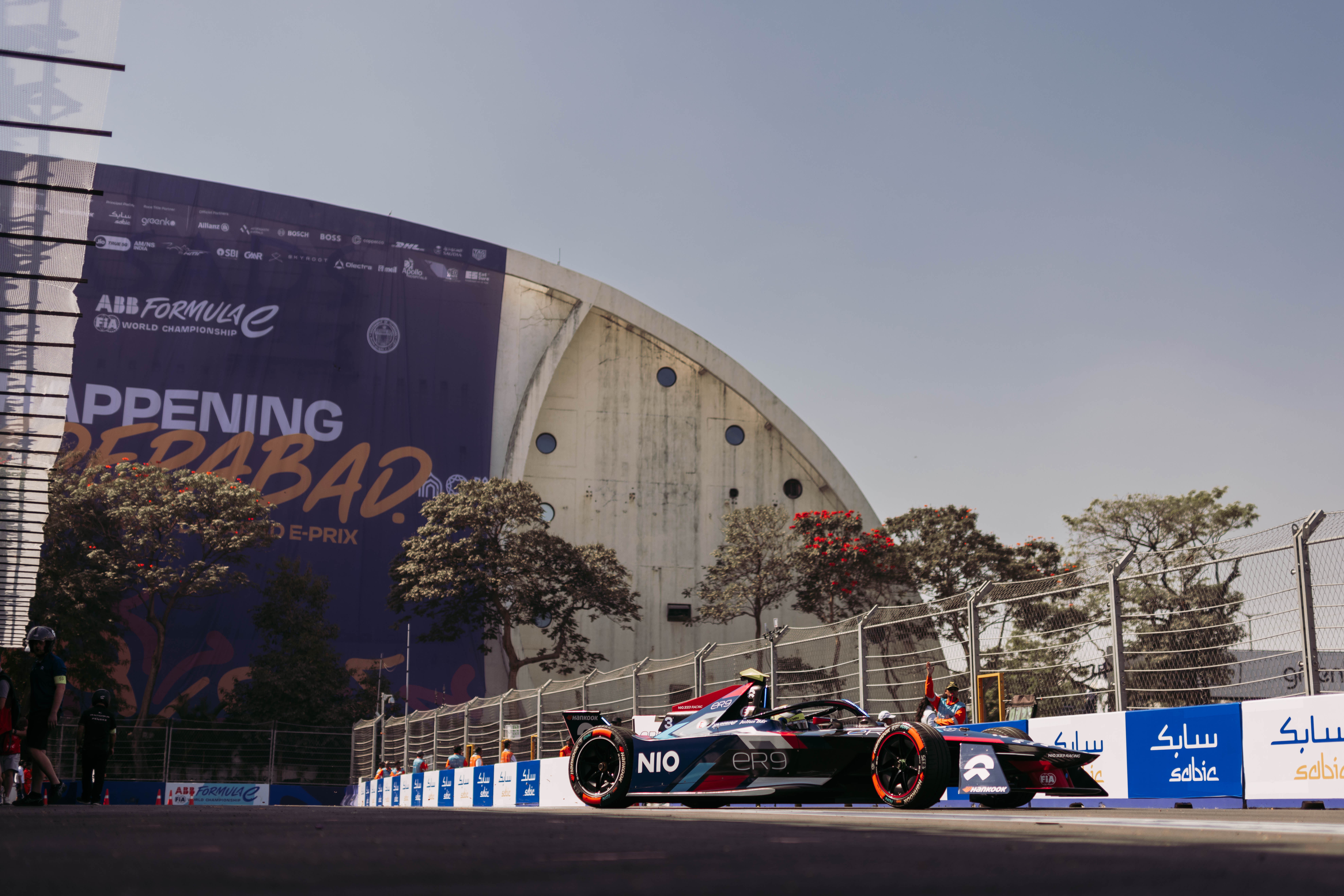
Sergio Sette Camara scored his best Formula E result for almost two years in a race that the NIO driver had to wait to come to his way.
He did get more than his fair share of fortune as others crunched carbon around him. Yet the Brazilian displayed calm assurance as he pushed through to an excellent fifth position, taking advantage of Oliver Rowland’s and Stoffel Vandoorne’s five-second penalties, as well as Lucas di Grassi’s energy burn-athon and Sebastien Buemi’s contentious overspike ping.
Still, he kept his nose clean throughout the race and played the long-game, rising from 15th on the grid to a very welcome 10 points for NIO. It was its biggest points haul since the team was restructured in 2019.
Hyderabad E-Prix
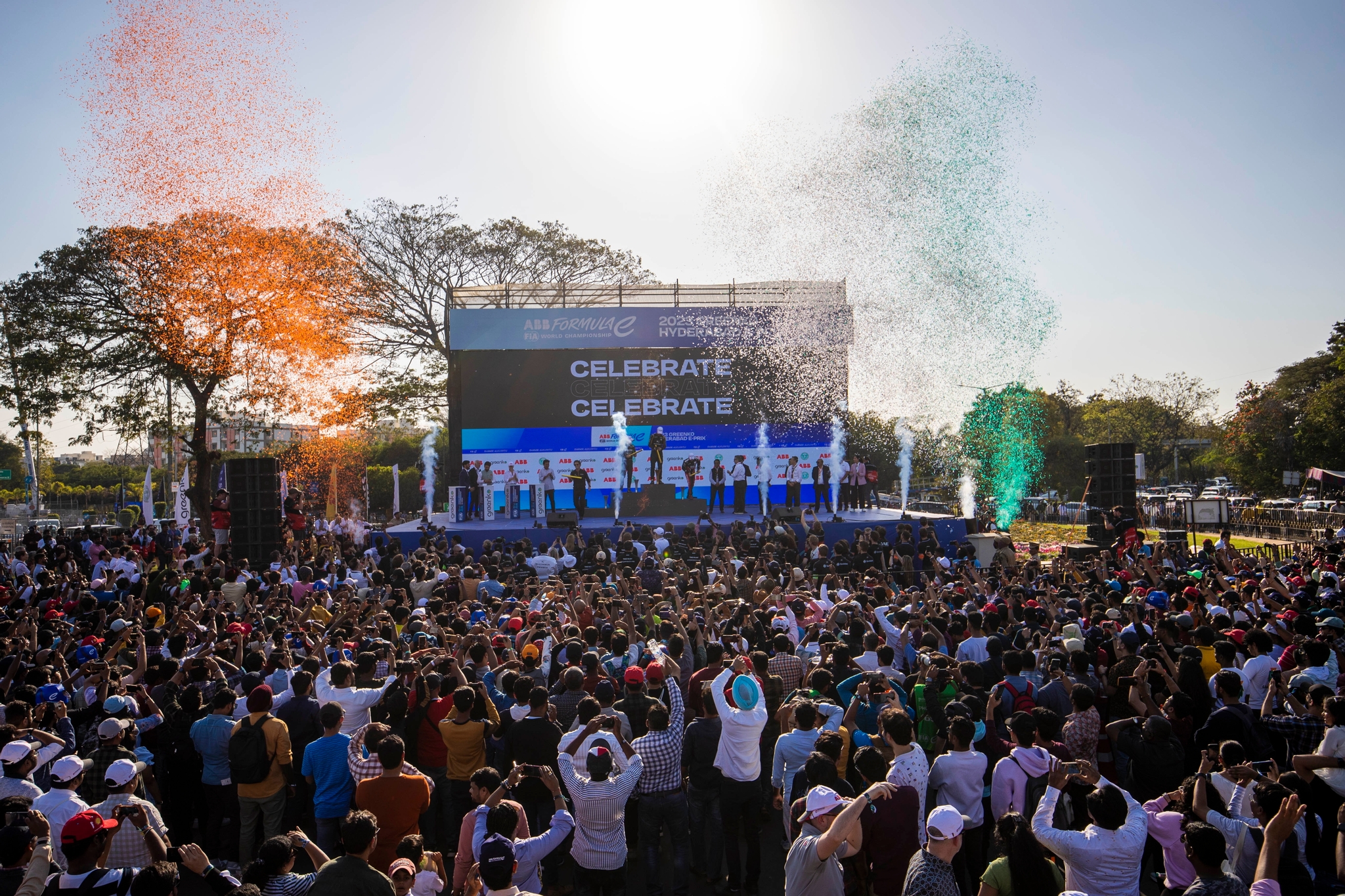
Yes, there was an overriding element of chaos but the first ever Hyderabad E-Prix had many elements of success about it.
A few days prior to the race it didn’t look so rosy as a late push to complete the track and its infrastructure meant multiple suppliers and agencies were pushed to the limit and beyond.
It all came together, just. It always does.
The track was interesting; it had its major issues (see below) but it provided a superb race with action and spills aplenty.
That should gain it some significant fans as it looks to establish itself over the next four seasons, should the option be taken up by Formula E to come back – which it surely will.
The fact the race was enjoyed by Sachin Tendulker was a major coup for Formula E and such is the Little Master of cricket’s influence and status that Formula E will likely gain much needed interest in the sub-continent.
The announcement of a new partnership with Tata Communications will also assist leverage for the event, which next year should be a much more polished product all round but hopefully one that does not lose its raw and engaging vibe.
Oliver Rowland
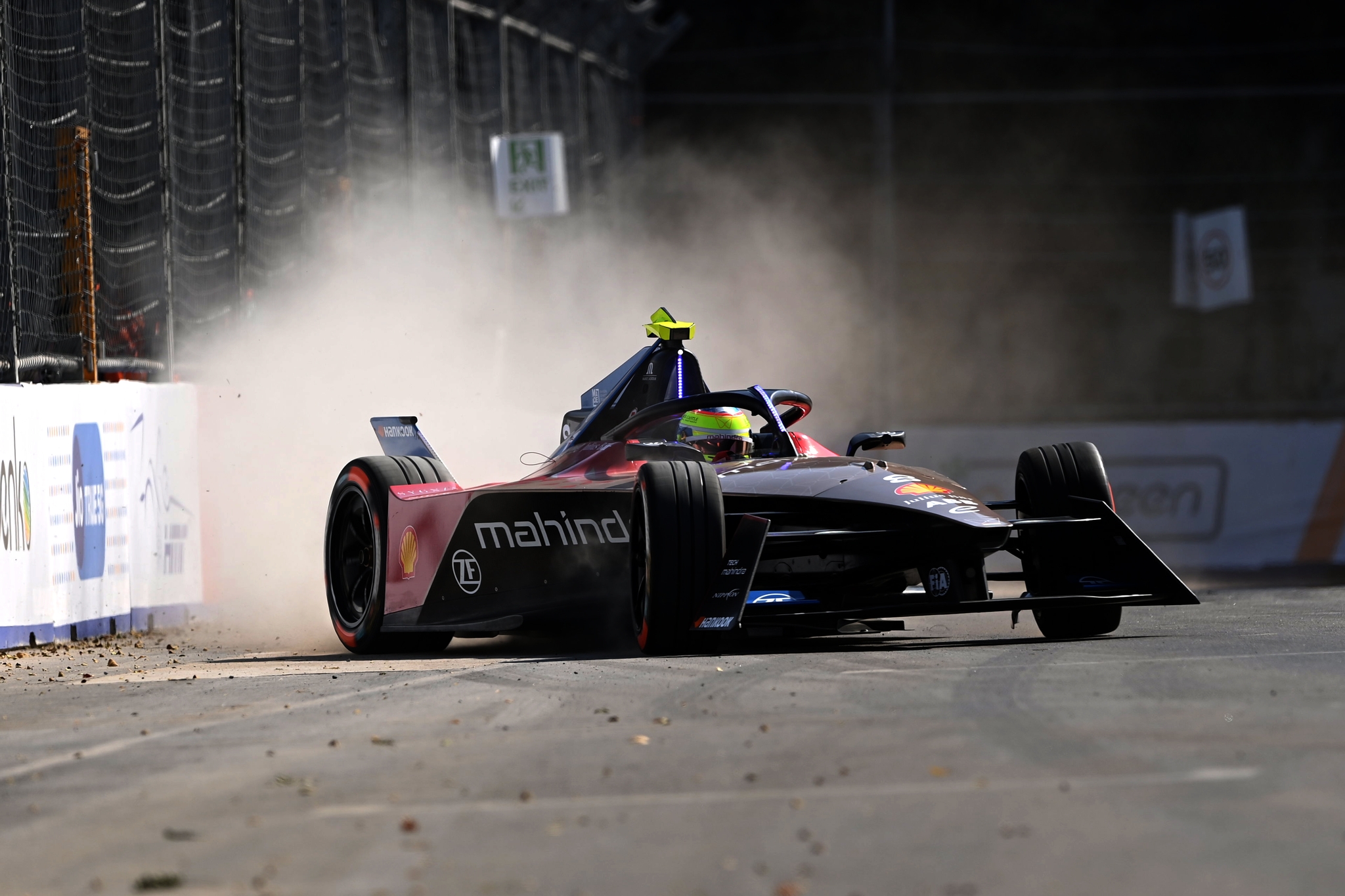
After an atypically quiet start to the season, Oliver Rowland was back to his brilliant best in Hyderabad, hauling the Mahindra into places where it probably shouldn’t have been.
He qualified 10th and was immediately pushing up through the field, making several quality moves, including a great opportunistic one on Rene Rast’s McLaren-Nissan.
He was a big winner from Jaguar’s disaster and briefly ran fourth. However, a five-second penalty was acquired at mid-distance for track limits.
Still, Rowland battled away and made an outrageous attempt to take fourth from Buemi’s Jaguar on the outside of Turn 3. That cost him a position to da Costa, yet despite marginal efficiency and a damaged front wing he brought the car home fifth – although he was demoted to sixth after the penalty was applied.
The fact he was only demoted to sixth was partly thanks to his team-mate di Grassi, who attempted to block everyone behind him at one stage in an effort open up a gap for Rowland to drop into once his penalty was applied.
Losers
Jaguar
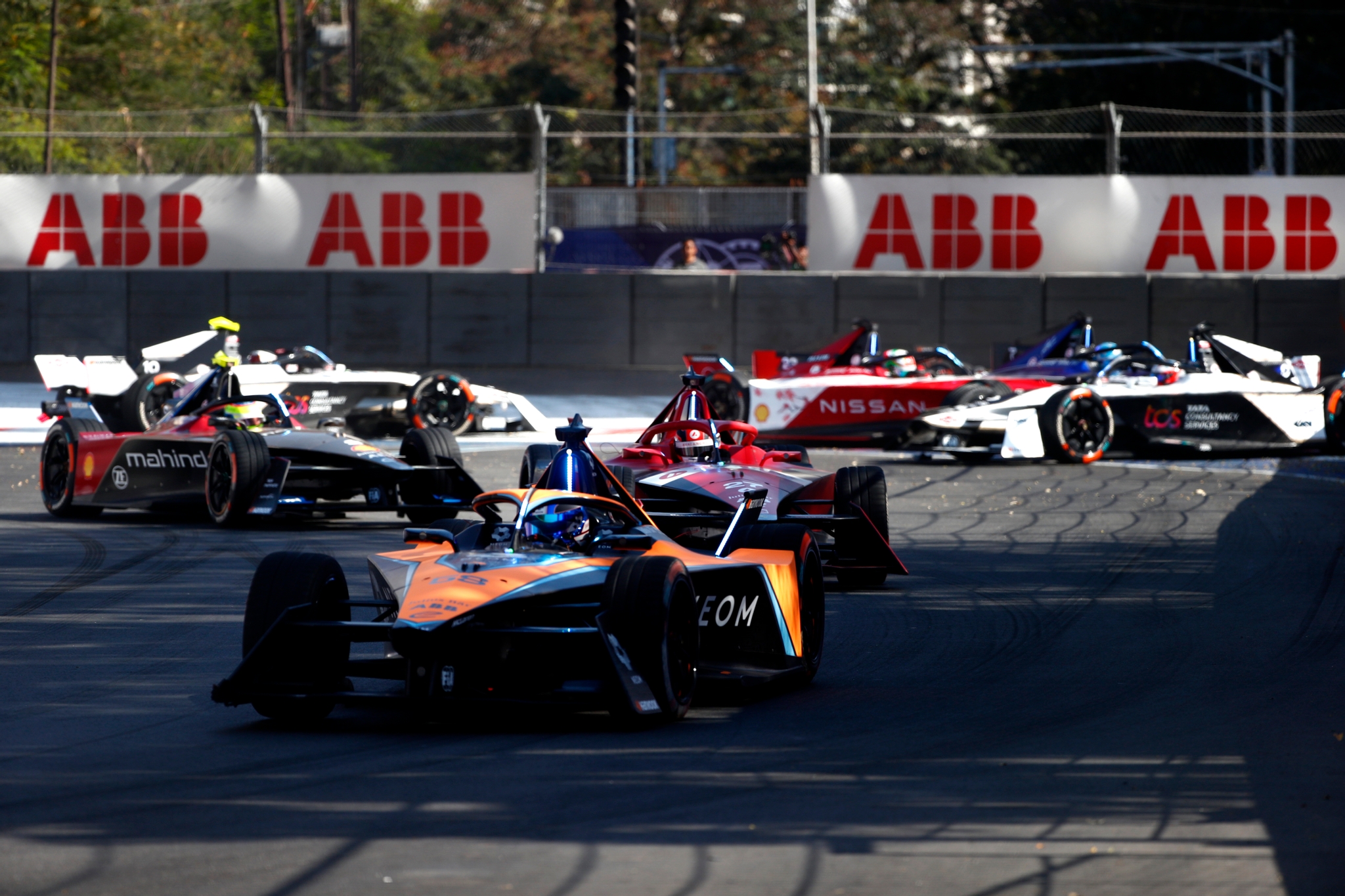
The cardinal sin; the doomsday scenario; the ultimate nightmare. Whatever you want to call it, this was a disaster and the fact it was self-inflicted and on ‘home’ ground for the team will sting for a fair while.
Bird was humbly and genuinely apologetic afterwards for his error, which ended both his and Evans’s races and severely compromised those of Maximilian Guenther and Sacha Fenestraz.
The fact the ‘Big Cats’ were in such a strong position was doubly galling and it was team boss James Barclay who put it best when he told The Race that “it’s not like a close racing incident, it’s just a mistake.”
“Maybe we’re over-analysing it because it happens up and down the grid, that could happen any time you’re in free air and you don’t hit anybody,” he said.
“The fact that the time it happens and your team-mate is in front of you, that’s not ideal but it is what it is. No point in over analysing it.”
There probably wasn’t much more to be said for a team that has to regroup fast and get some huge points if its promise is finally to be excavated at Cape Town later this month.
McLaren
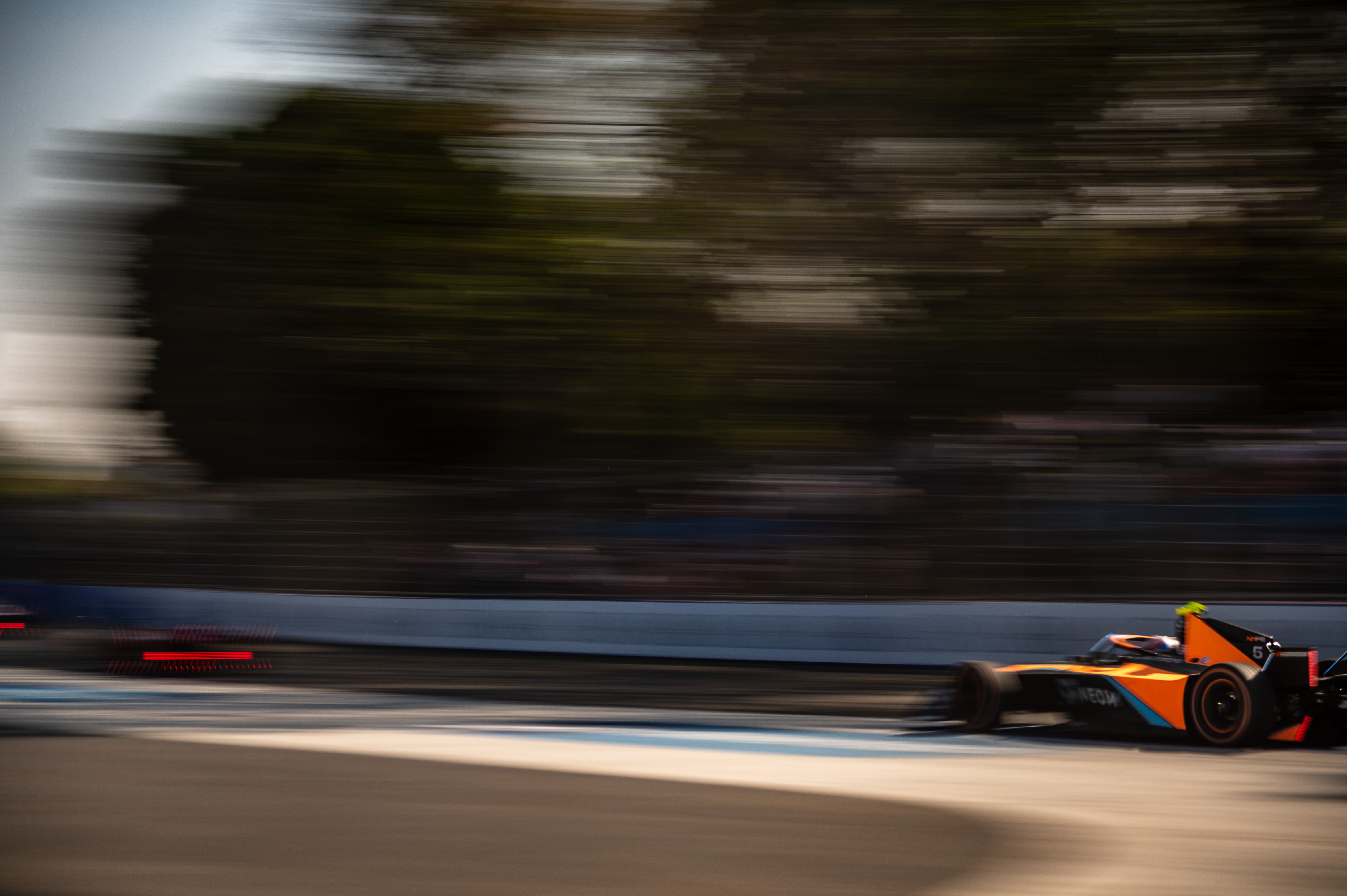
The Hyderabad track was festooned with Papaya-coloured bodywork at the end of the race, which was a fresh experience for the new-look team after a generally clean previous three events.
This was a missed opportunity for McLaren as it clearly continued to enjoy the strong qualifying and race pace it has evidenced so far in 2023. As a result, it slipped from third to fourth in the standings, leapfrogged by Envision.
This time though incidents, some of its drivers own making and some bizarrely not, were its downfall.
Rast made it through to the duels for the third consecutive race but a mistake at Turn 12 on his quarter-final lap against Mortara scuppered any further progress, as did a track limits violation in the notorious debacle that triggered Vergne’s solo semi-final run.
His race was brewing nicely and he was in a threatening position. However, he got slightly compromised when Nick Cassidy also took his attack mode right in front of him and then his race ended ignominiously when he nerfed a highly displeased Jake Dennis up the rear at Turn 3 while in fifth.
Jake Hughes’ day was equally filled with promise but ended in dejection.
He could have fought for at least another top-four start but a team error in letting him leave the pits within the 100-second minimum pitlane time meant he was banished to the back.
His race looked promising for at least a few points until debris damaged his mirror and the tether that holds the unpopular component in place jammed in his steering wheel, causing him to swipe the Turn 3 exit wall.
Jake Dennis
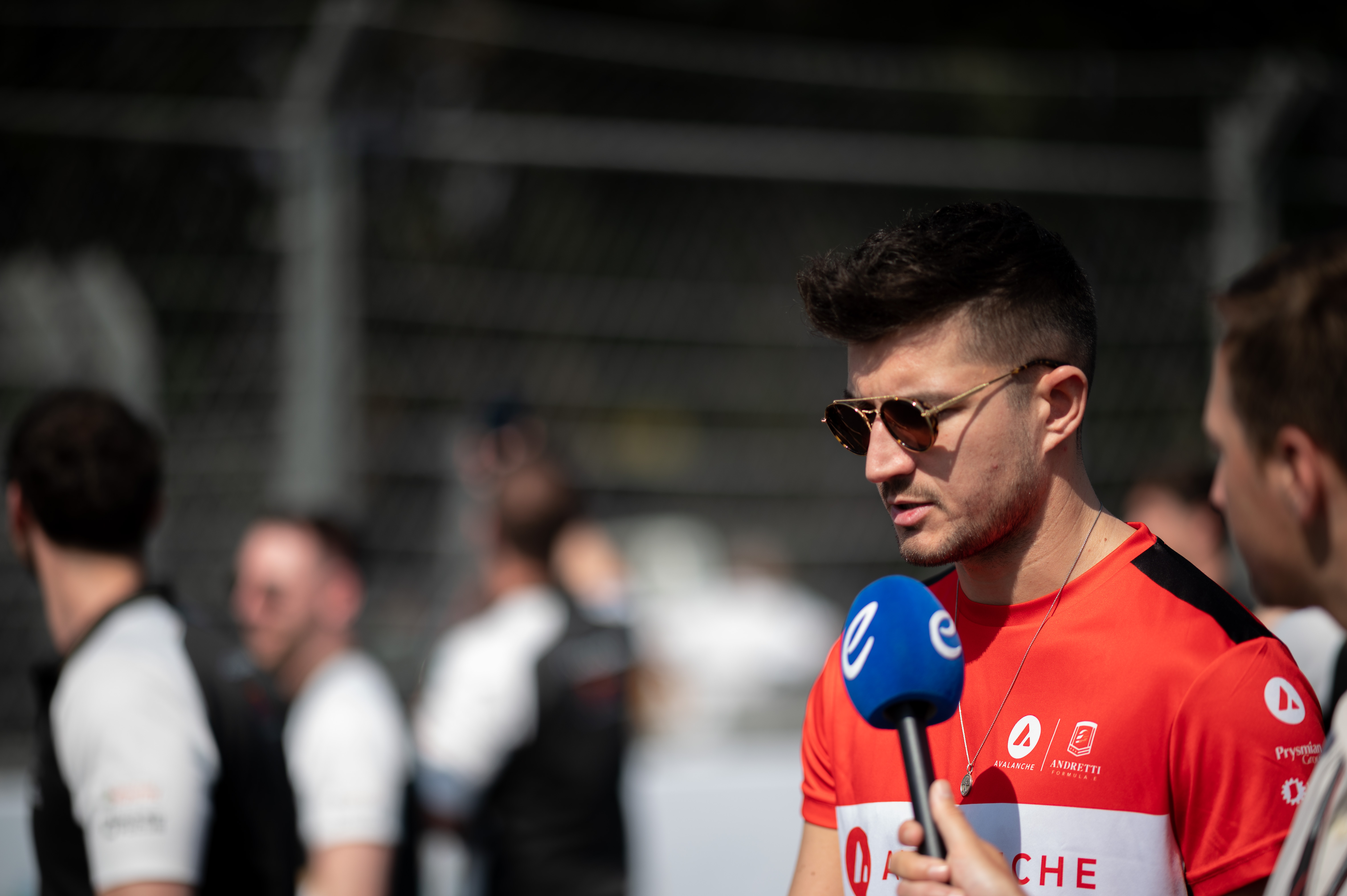
Dennis’s misfortune cost him important momentum in keeping Wehrlein honest at the top of the standings.
That was thanks to being wiped out by Rast, and the German’s sheepish apology after the race, while appreciated, was scant consolation.
His damaged rear bodywork and tyre meant a lengthy pitstop and meant a possible podium dissolved, allowing Wehrlein to stretch his championship lead from six points to 18.
Dennis deserved more big points but this time that chance was snatched from him completely.
Maserati
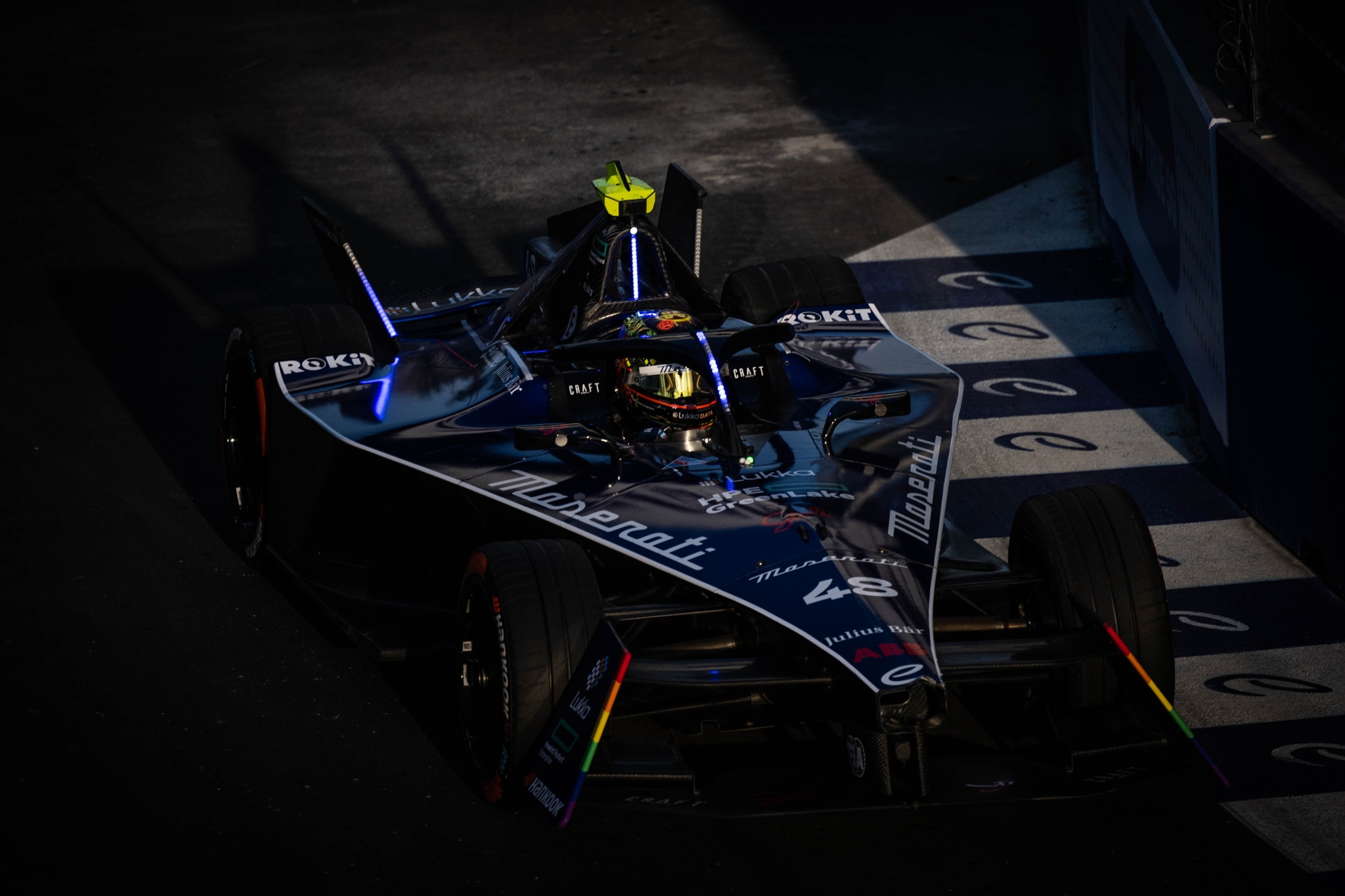
A bit like McLaren, the other new entrant Maserati rued poor-luck and some misjudgement as it continued its stuttering start to life in Formula E.
However, in India it was at least a factor which generally hasn’t been all season.
But again, Mortara made errors in both practice (rear-ending Ticktum’s NIO 333) and the race (doing the same to Cassidy’s Jaguar). That eventually meant a nose change, despite an initial gamble to stay out.
From the back of the field Mortara then drove an excellent race, rising to an eventual 10th position, largely with the aid of the safety car and also penalties for others. Still, it was a fine response, although the Swiss/Italian will have been wondering if he let at least third place slip from his grasp.
Guenther equally had a genuine shot at a top-three result swiped from his table by the Bird-triggered mess at Turn 3.
He was left “a bit numb” after he was forced to park his car temporarily when hemmed in by Evans’s damaged Jaguar. He’d just taken attack mode and was convinced he would later have been “on the tail of Vergne” had it not been for that.
Guilty in Riyadh, wretchedly innocent in Hyderabad, Guenther had the ultimate ‘what if’ status on Saturday.
Hyderabad E-Prix (again)
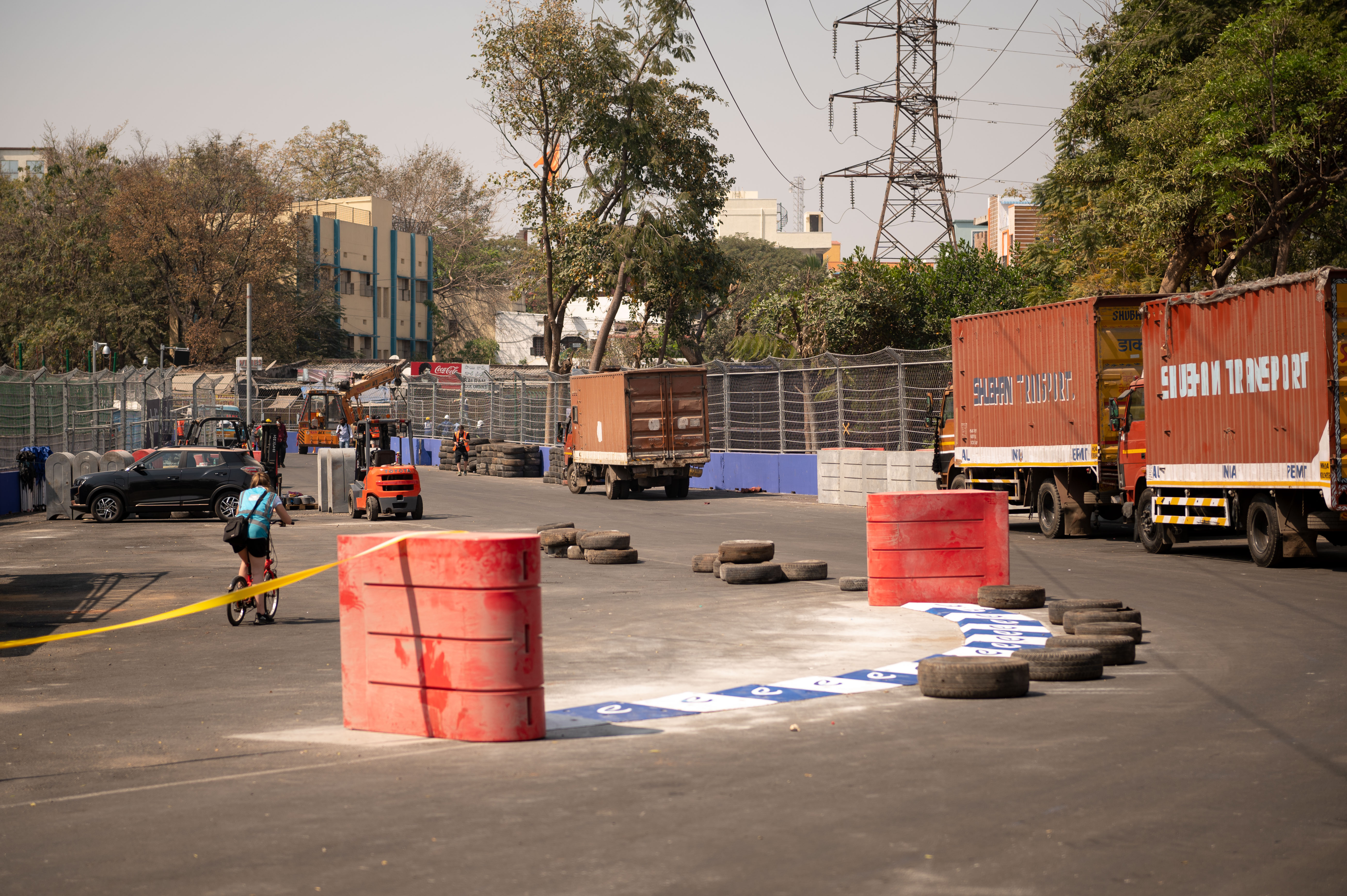
The good was good, but the bad was pretty bad too.
By-passing all the new-race challenges, because they were always going to be difficult at Hyderabad, there were several troubling topics on stark display last Saturday.
The ill-conceived first chicane was the biggest.
The previous flat-out right-hand kink was deemed to be too dangerous in terms of the speed being carried down to Turn 3, and in combination with adding an extra regen braking capability it was changed into a quick chicane.
While understandable to some degree, it was unpopular as drivers took every inch available on its exit – forcing the FIA into policing track limits.
Doing that on a street track is counter-intuitive and confusing to spectators. Additionally, the confusion that played out in the quarter-final stages of qualifying was just plain embarrassing and a likely ‘change the channel’ moment for new viewers.
No reasonable explanation for the delay was forthcoming and Vergne’s solo semi-final ‘duel’ was embarrassing.
The track surface made a blustery Zandvoort look good, and the FP1 delay due to commuters being allowed on to the track for a brief tour (and a scuffle with security) felt like something from the 1970s.
More worryingly, we got through the event without a major issue involving any of the menagerie of wild animals (goats, cats, rats, simians, bats, mongoose and a wild boar) in and around the circuit. Sacha Fenestraz’s collision with a rat in qualifying was the only notable incident.

